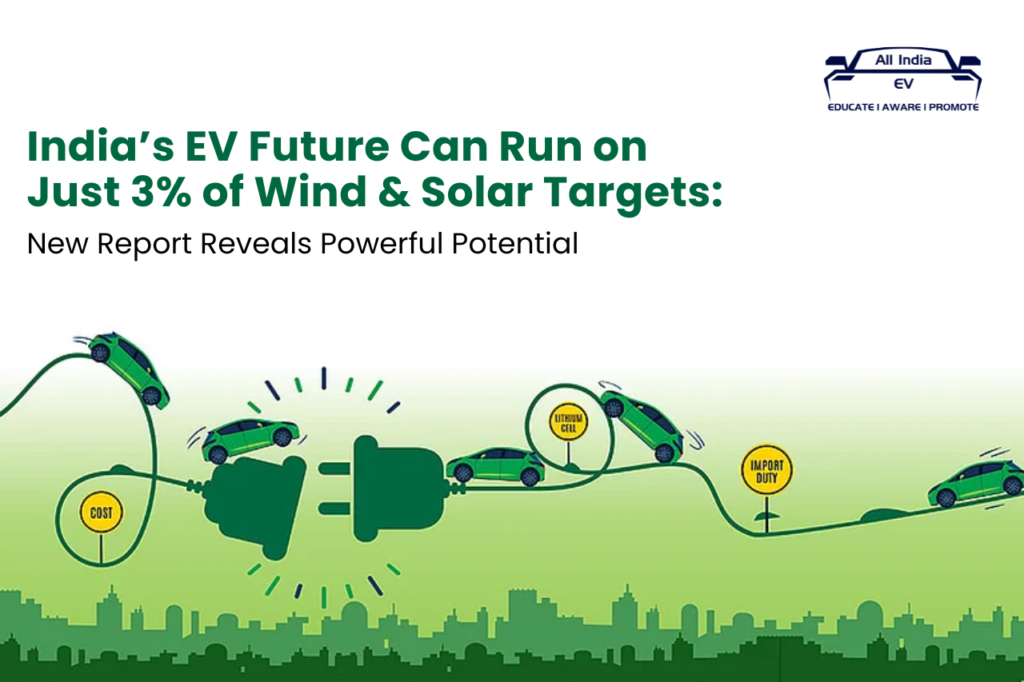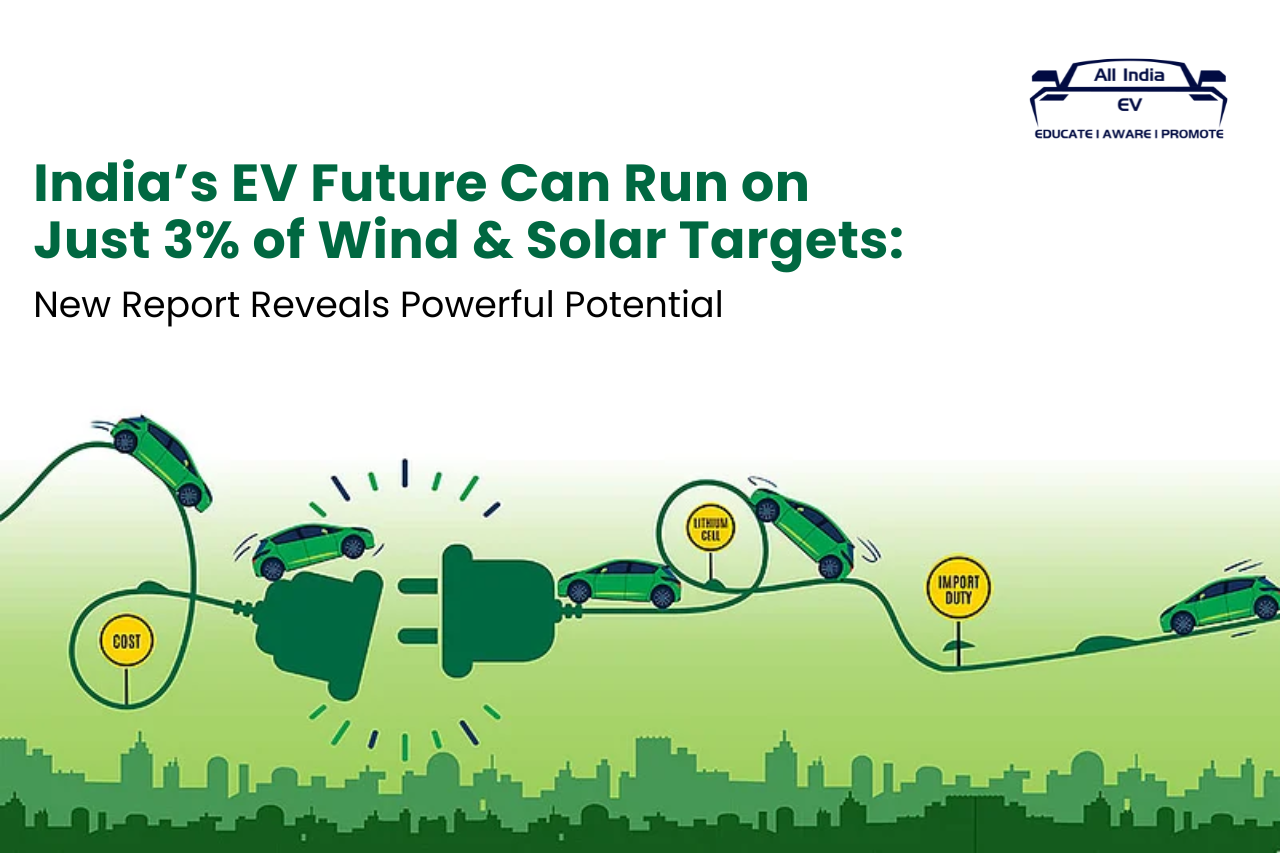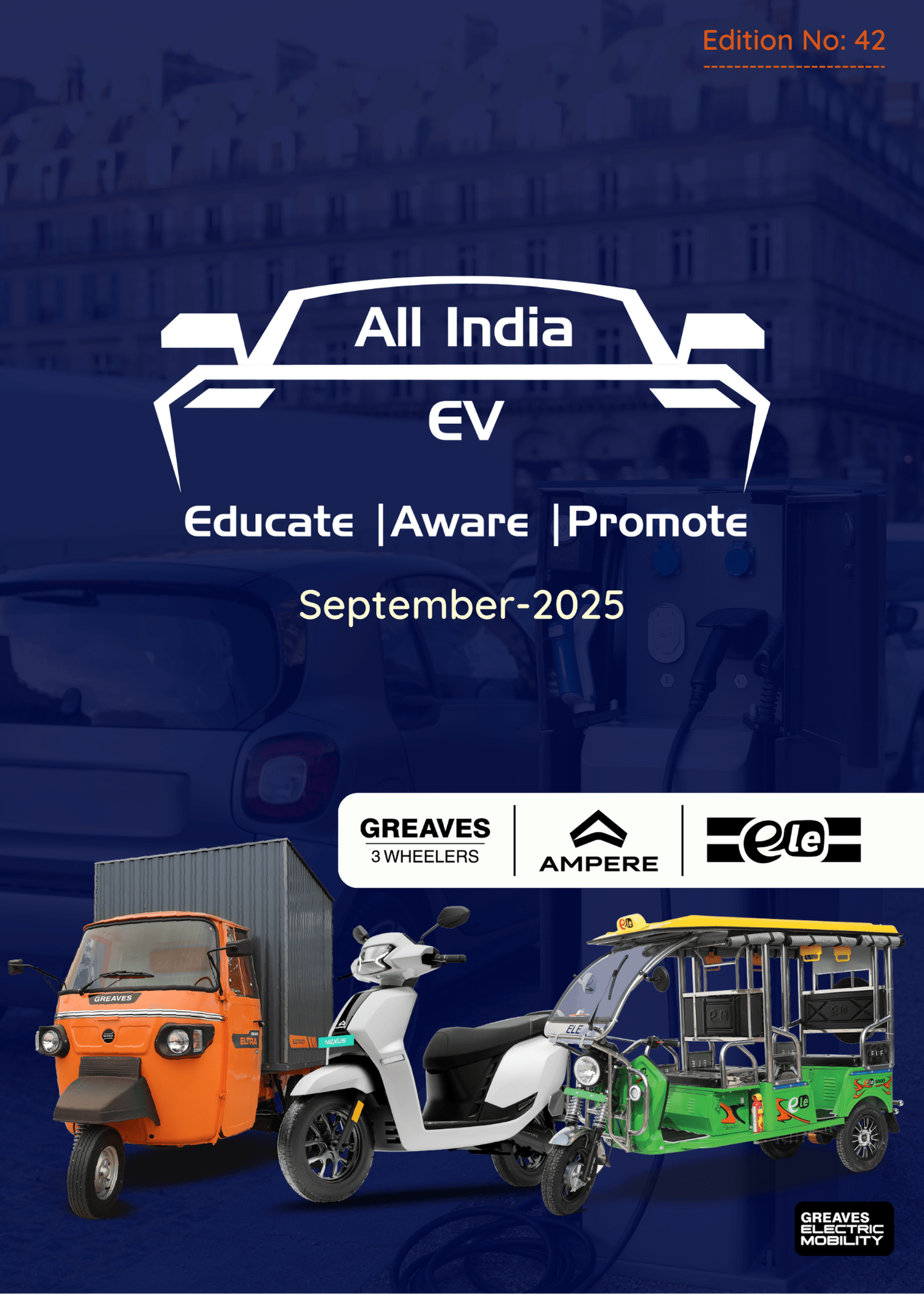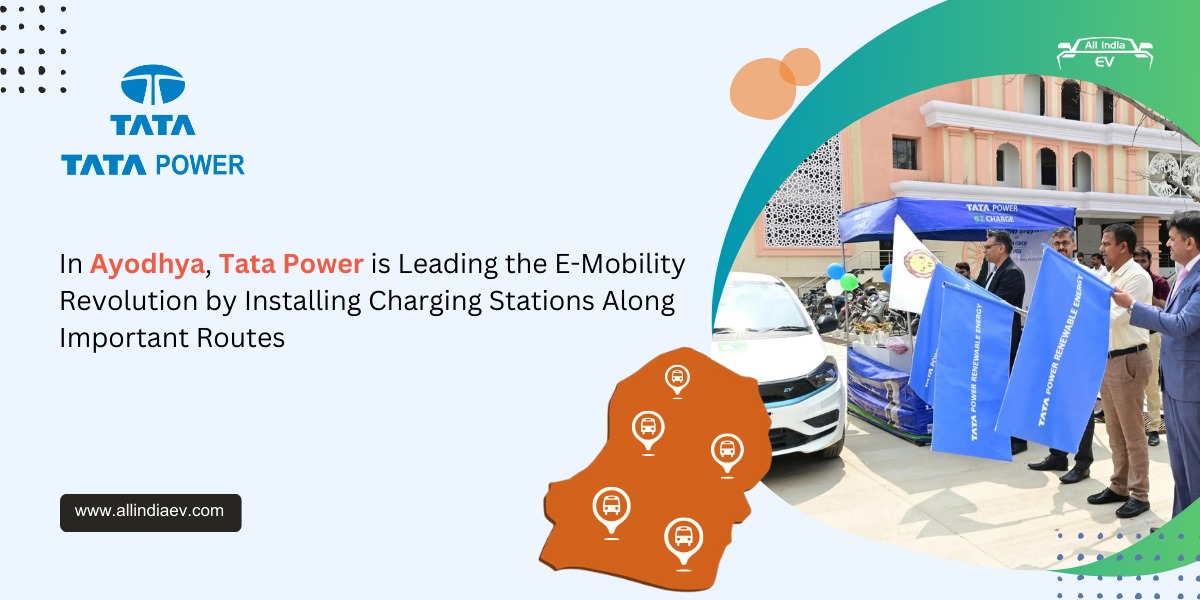
India’s EV Charging to Grow 9X by 2030; 3% Green Energy Can Power Entire EV Fleet by 2032
A new report by energy think tank Ember reveals that just 3% of India’s projected wind and solar capacity by 2032 would be sufficient to meet the country’s entire electric vehicle (EV) charging demand — if clean energy alignment policies are adopted.
This insight comes as both renewable energy capacity and EV adoption are rapidly accelerating in India, presenting a critical opportunity to ensure the two sectors grow in tandem to achieve genuine emissions reduction.
EV Charging Demand vs Renewable Potential
Based on the National Electricity Plan (NEP-14), India aims to achieve 486 GW of wind and solar capacity by 2032. Ember estimates that India’s EV charging demand by then will be around 15 GW, which is only 3% of that target.
However, to capitalize on this synergy, policy reforms are essential, especially those that align EV charging infrastructure with renewable energy availability, the report stresses.
EV Sales Booming, But Clean Charging Lags
India’s EV sales have risen 11-fold between FY 2020 and FY 2025, with FY 2025 sales projected in millions. Yet, according to Ember, only 22.3% of EV charging is currently powered by clean electricity.
The report analyzed 10 Indian states — including Gujarat, Karnataka, Tamil Nadu, Maharashtra, and Uttar Pradesh — which represent major EV markets. States with higher hydro capacity like Karnataka (37.6%), Madhya Pradesh (23.8%), and Uttar Pradesh (18.3%) are better placed in terms of clean electricity availability. In contrast, states like Gujarat, despite high solar and wind penetration, reported just 12.3% clean charging due to limited hydro power.
“Most EVs are charged at night, when coal dominates the power grid,” said Ruchita Shah, Energy Analyst at Ember. “Shifting charging to solar hours using Time-of-Day (ToD) tariffs can increase clean energy use significantly.”
Solar Hour Tariffs Gaining Ground
States like Assam, Bihar, Gujarat, Madhya Pradesh, Maharashtra, Odisha, Rajasthan, Tamil Nadu, and Uttar Pradesh have already implemented solar-hour ToD tariffs, offering discounts for charging during daytime hours and surcharges during peak evening hours.
These ToD models are crucial for promoting daytime EV charging at offices, commercial hubs, and public stations, especially as most private charging still occurs at home during coal-heavy nighttime hours.
Policy Recommendations: Clean Energy, Smart Charging
The report suggests multiple strategies to green India’s EV ecosystem:
- Expand and enforce ToD tariffs to encourage solar-hour charging.
- Promote solar-powered EV charging stations and solar-plus-storage models.
- Improve data collection and sharing on EV charging to help electricity distribution companies (DISCOMs) forecast demand accurately.
- Use purchase incentives and infrastructure policies to link EV growth with clean energy procurement.
“EVs can act as a demand lever for clean electricity if charging is guided by smart incentives,” added Shah. “States with strong EV growth should view the sector as a strategic tool to decarbonize and stabilize the grid.”
The Big Picture: Decarbonising India’s Transport
Transport accounts for 14% of India’s energy-related emissions, with road transport making up over 90% of that. As EV charging demand is expected to grow nine-fold between 2024 and 2030, the environmental impact of aligning EVs with renewables could be transformative.By prioritizing daytime, clean-energy charging and building a smarter grid, India has a real chance to make EVs not just an alternative mode of transport — but a catalyst for clean energy integration and emissions reduction.











We appreciate the insightful report highlighting the potential of aligning renewable energy with EV charging infrastructure in India.
We are pleased to share that our team has recently deployed a smart EV charging system aligned with the report’s recommendations:
✅ Time-of-Day (ToD) Tariff Integration: Charging operations are scheduled during solar hours to maximize clean energy use and minimize costs.
☀️ Renewable Energy Usage: The system is powered by solar energy, supplemented with a battery storage unit to ensure continuous clean energy availability.
📊 Smart Monitoring & Control: Real-time energy monitoring and intelligent source switching (solar/grid/storage) are enabled via a microcontroller-based solution.
📱 Cloud Integration: All data is logged and visualized through Firebase and an Android app, ensuring transparency and efficiency.